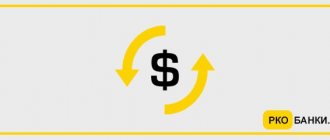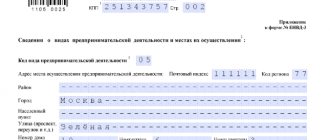Who is affected by the changes in the procedure for conducting cash transactions?
To one degree or another, innovations in the procedure for conducting cash transactions affected all business entities. In particular:
- individual entrepreneurs and organizations that are small businesses (you will find the criteria for small businesses in this article);
- organizations that are not small;
- organizations with separate divisions;
- persons using cash registers or strict reporting forms (read more about accounting for funds when using online cash registers here);
- employers giving money to employees on account.
Let us now consider these changes in more detail.
Evotor 7.2
- Cost: from 16,700 rubles. No rent.
- Internet access via SIM card (mini-sim), Wi-Fi.
- Autonomous operation is not possible. There is no battery, power is supplied from the mains.
- It’s easy to return goods and sell them at a free price.
- There is integration with EGAIS. Paid integration with 1C and loyalty programs.
- There are drivers for scales and barcode scanners, as well as a connector for connecting a cash drawer.
- Works only from the network.
Suitable for trading in stationary retail outlets.
Conducting cash transactions: comparison of current and old rules
For clarity, we will present the main changes in the procedure for conducting cash transactions in the form of a table (comparison of current and previous rules, including taking into account those introduced by Directive No. 5587-U, effective from November 2021, and No. 4416-U of 2021).
| Operations affected by changes | Changes in the procedure for conducting cash transactions from November 30, 2020 | The procedure for conducting cash transactions, in force since 2017 |
| Issuance of money on account | The calculation rules have not changed except for the following aspects:
| To issue cash to an employee on account for expenses associated with the activities of a legal entity or individual entrepreneur, an expense cash order is drawn up in accordance with a written application of the accountable person, drawn up in any form, or an administrative document of the manager. The application or administrative document must contain a record of the amount of cash and the period for which it is issued, as well as the manager’s signature and date. If an application is drawn up for accountable amounts, then the manager is not required to indicate the amount of accountable funds and the period. The accountable himself can do this. And the manager will only sign and date it. Issuance on account is allowed if the recipient has not reported on the previous advance. |
| Interaction between the head office and department offices | Separate divisions have the right not to keep a cash book if they do not store funds, but hand them over to the cash desk of the parent organization. | An organization that has separate divisions (SU) has the right to independently establish the procedure and timing for transferring to the parent organization copies of the SE's cash book sheets, taking into account the deadline for drawing up accounting (financial) statements (clause 4.6 of Directive No. 3210-U). |
| Requirements for working with automatic devices for accepting and issuing money without the participation of employees (vending machines) have been approved. | The name of software and hardware has been changed to automatic devices for receiving and squeezing money without the participation of workers. They must automatically accept and issue banknotes and be able to recognize at least 4 machine-readable security features over the entire area of the banknote given in paragraph. 14–19 clause 1.1 of the Central Bank Regulations dated January 29, 2018 No. 630-P. | Software and hardware must be “able” to recognize banknotes based on 4 security features established by the regulations of the Central Bank. |
| New rules for accepting and issuing banknotes | When accepting banknotes, the cashier is required to check their solvency. At the same time, he is obliged to accept banknotes that do not contain signs of counterfeiting, are without damage or have abrasions, extraneous inscriptions, punctures, missing corners or edges and other minor damage. The cashier is prohibited from issuing banknotes that have one or more damages such as extraneous inscriptions of 2 or more characters, violation of the integrity of the banknote, a lost corner (more than 32 sq. mm) or a torn edge (7 mm or more in length), as well as other damage , specified in paragraph. 6–15 clause 2.9 of the Central Bank Regulations No. 630-P. Such banknotes should be handed over to the bank. | — |
| Identification of the recipient of funds | The cashier must ensure that cash is issued to the person indicated in the cash receipt order. Request for document verification. identification is excluded. | When issuing funds, the cashier is required to check the identity document. |
| Salary deposit | The rule about reflecting in the payroll the deposit of wages not paid on time is excluded. | On the last day of issuing cash intended for payment of wages, the cashier in the payroll record makes an entry “deposited” opposite the names and initials of employees who have not been issued cash, calculates and writes in the final line the amount of cash actually issued and the amount subject to deposit. |
For other innovations, see the ConsultantPlus Review and receive free demo access to the K+ system.
ConsultantPlus experts described a step-by-step algorithm for conducting cash transactions and maintaining cash discipline. Get free demo access to K+ and go to the Ready Solution to find out all the details of this procedure.
In addition to Instructions No. 3210-U, businessmen must comply with Instructions No. 3073-U dated 10/07/2013. According to this document, firms and individual entrepreneurs have the right to spend cash received for goods (work, services) sold exclusively for payment:
- employee salaries;
- insurance compensations under insurance contracts;
- remuneration for work/services, as well as for payment for goods (within 100 thousand rubles under one contract);
- accountable funds;
- for personal needs of individual entrepreneurs not related to entrepreneurship;
- returns for goods (work/services).
Individual entrepreneurs can use a simplified method of conducting cash transactions. If you have access to ConsultantPlus, check whether you are accounting for the entrepreneur’s funds correctly. If you do not have access, get free trial access to the system and proceed to the Ready-made solution.
Let’s combine the requirements of the Central Bank Directives into a convenient scheme:
Fiscal documents instead of standardized forms for CCP
Unified forms for cash register equipment
Previously, when making payments through the cash register, organizations used unified forms of primary accounting documentation KM-1–KM-9 (approved by Resolution of the State Statistics Committee of the Russian Federation dated December 25, 1998 No. 132):
But Resolution No. 132 was not adopted in accordance with Law 54-FZ, therefore, according to officials, it is not necessary to apply it (letters of the Ministry of Finance of the Russian Federation dated May 12, 2017 No. 03-01-15/28914, dated April 4, 2017 No. 03-01-15 /19821, dated January 25, 2017 No. 03-01-15/3482, dated September 16, 2016 No. 03-01-15/54413, No. 03-11-11/61091 dated August 13, 2019)
So organizations that use online cash registers in accordance with 54-FZ are not required to prepare certificates and reports from the cashier-operator (form KM-6) and keep a journal of the cashier-operator (form KM-4) for each cash register (letter from the Ministry of Finance of the Russian Federation dated 12.05 .2017 No. 03-01-15/28914).
Let us remind you that incoming cash orders (PKO) and outgoing cash orders (RKO) must be issued on the basis of fiscal documents (clause 4.1 of Instructions No. 3210-U).
Fiscal documents
Fiscal documents are checks and reports that cash register equipment creates according to established formats (Article 1.1 54-FZ).
Fiscal documents include (clause 4 of article 4.1 of law No. 54-FZ):
- registration report;
- report on changes in registration parameters;
- shift opening report;
- cash receipt (strict reporting form);
- correction cash receipt (strict correction reporting form);
- shift closing report;
- report on closing the fiscal drive;
- report on the current state of settlements;
- operator confirmation (this is the only document that is generated not on a cash register, but by technical means of the OFD).
The formats of fiscal documents are approved by Order of the Federal Tax Service of the Russian Federation dated March 21, 2017 No. ММВ-7-20/ [email protected]
Separately, it is worth mentioning the duration of the shift. By law, work with fiscal equipment is divided into cash register shifts. Before the start of calculations using cash register systems, a report on the opening of a shift is generated, and upon completion of calculations, a report on the closure of a shift is generated.
In this case, a cash register receipt cannot be generated later than 24 hours from the moment the report on the opening of a shift is generated (clause 2, article 4.3 of Law No. 54-FZ). This means that a shift when working at an online cash register cannot last more than 24 hours. This is explained by the capabilities of the fiscal drive: if the shift is more than 24 hours, the fiscal sign of the document is not formed on the check (paragraph 9, clause 1, article 4.1 of Law No. 54-FZ).
You can open a cash register shift on one day and close it the next day, but provided that the total duration of the shift does not exceed 24 hours. There are no other restrictions in 54-FZ, including no requirements that the shift must be closed at a certain time (letter of the Ministry of Finance of the Russian Federation dated May 5, 2017 No. 03-01-15/28066).
Responsibility for violation of the rules for conducting cash transactions
And in conclusion, a few words about responsibility. For violation of the procedure for working with cash and the procedure for conducting cash transactions, administrative liability is provided under Art. 15.1 Code of Administrative Offenses of the Russian Federation. This is a fine: for officials - from 4 thousand to 5 thousand rubles, for legal entities - from 40 thousand to 50 thousand rubles.
In this case, violations include:
- making cash settlements with other organizations in excess of established limits;
- non-receipt (incomplete receipt) of cash to the cash desk;
- failure to comply with the procedure for storing available funds;
- accumulation of cash in the cash register in excess of established limits.
Read more about liability for violation of the procedure for conducting cash transactions in the article “Cash discipline and responsibility for its violation .
How to calculate the cash balance limit - formulas
Enterprises organize the process associated with cash flow in different ways. Some constantly receive cash receipts into the cash register, but do not spend it at all. Someone, on the contrary, spends a large amount of cash, for example, to pay off debts to suppliers, but has no cash proceeds. Based on the characteristics of a particular enterprise, the responsible employee will select the appropriate formula for calculating the cash balance limit.








